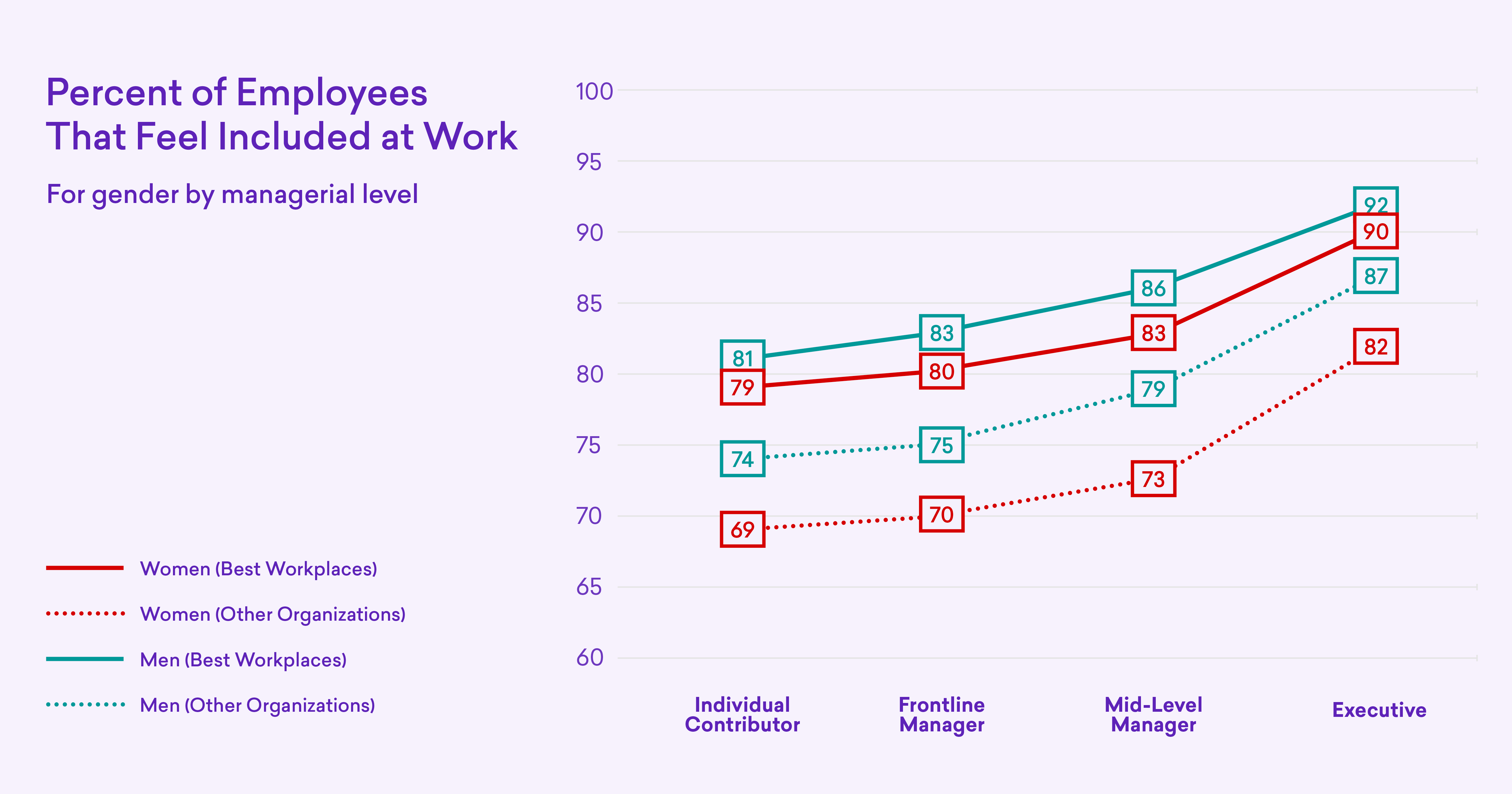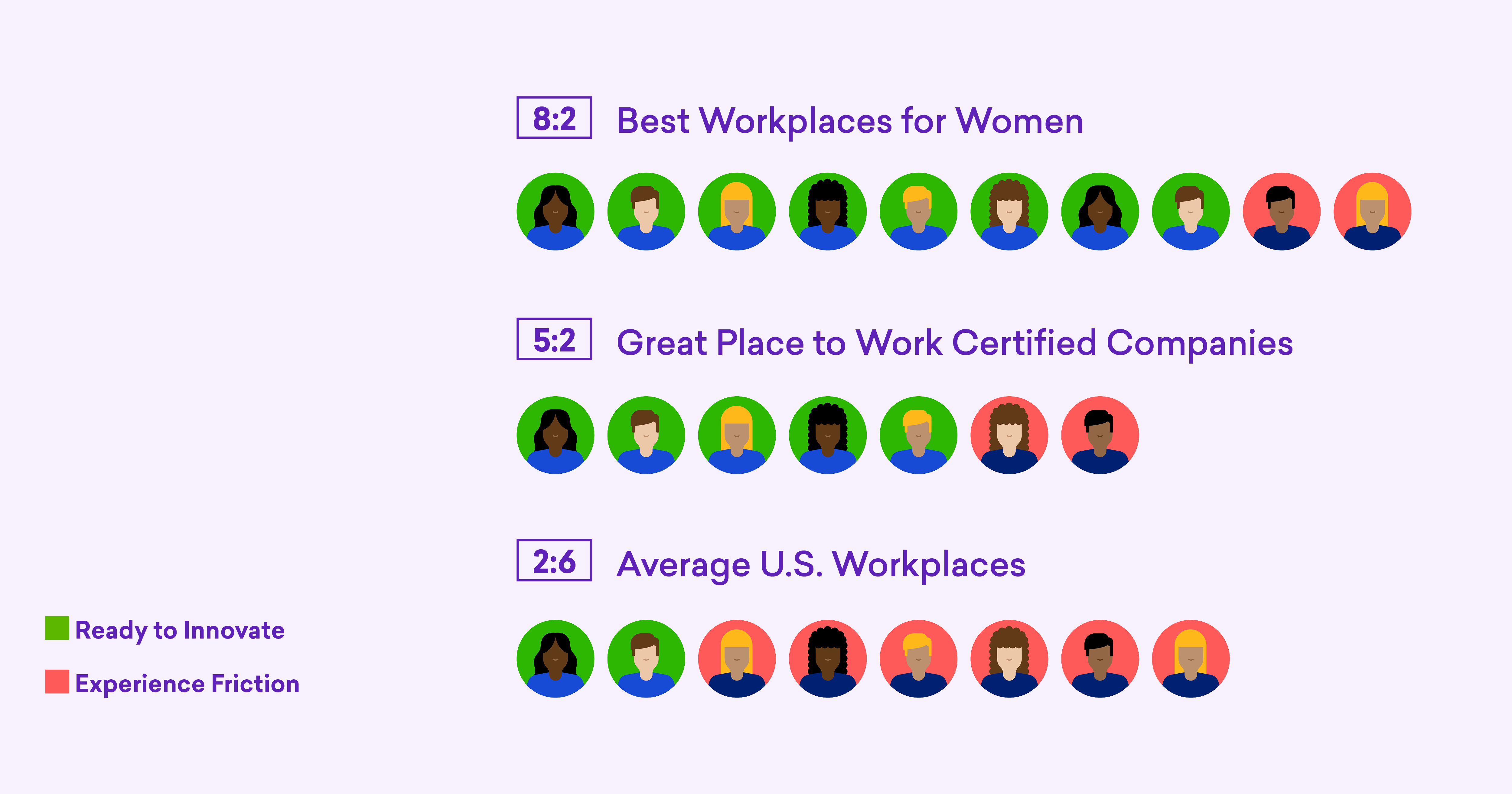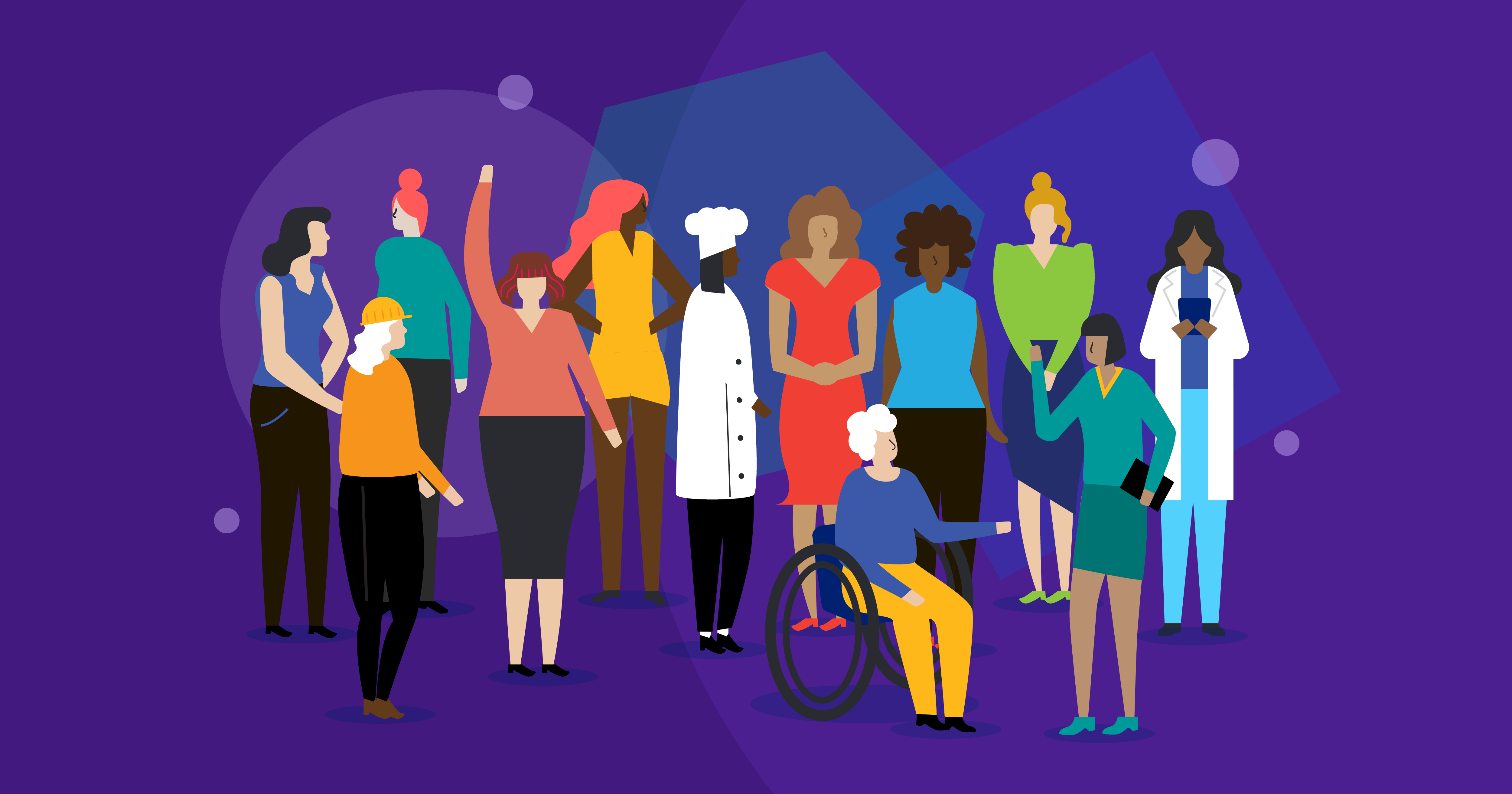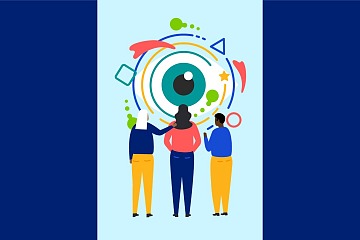Diversity & Inclusion, Employee Experience, Innovation, Women in the Workplace
Pay inequality isn't the only thing holding women (and men) back at work.
Analyzing data from almost 700,000 employee surveys across 1,058 different companies, we uncovered what makes the workplace great for women. Where employees reported consistently great experiences across 60 different aspects of workplace culture, the top made our list of 2019 Best Workplaces for Women™.
Among the fascinating insights from this study, we found that the degree to which people feel included and ready to innovate can be connected to the experience of women in the workplace.
There is inequity in inclusion
To feel included at work, all employees need the ability to share what makes them unique, have a sense of belonging among coworkers and believe that all people are treated equitably.
In our study, we found that men reported a greater feeling of inclusion at work than women. And this doesn't change with an increase in managerial responsibility. With each step up in management, there's an equal increase in the feeling of inclusion for both men and women so the gap persists at each stage.

Leaders can improve feelings of inclusion by creating an environment where employees feel free to bring their “whole selves to work.” Ensure that employees experience representation at the senior leadership level. Everyone wants to see and hear people who are “like them.” It’s harder to be what you can’t see.
Innovation happens more readily when your workplace is great for women
From our study, we dove into the underlying drivers of why both men and women actively and frequently innovate within their companies, versus those who feel unable.
Our research identified a core gauge of an organization’s innovation state: the Innovation Velocity™ Ratio. This measure of an organization’s innovation capacity is determined by how many employees consistently experience meaningful opportunities to innovate versus those who find these opportunities lacking, absent, or even threatening.
Across all genders, people at 2019 Best Workplaces for Women are more ready to innovate than other organizations. For every five women ready to innovate, two find friction.

At other organizations, for every three women ready to innovate, two face friction. Interestingly, but not surprisingly, men are also more likely to innovate at Best Workplaces for Women. (7:2 at Best Workplaces versus 5:2 for other organizations.)
To avoid barriers to innovation, leaders can strengthen their empathy muscle. Put yourself in the shoes of your employees so you can make sure front line employees have the resources they need on the job, have confidence they can care for themselves and feel part of the company’s purpose. These things enable people to harness new ideas.
If you rely on your people coming to you to know how they are feeling, there might be entire groups of people you never hear from. Leaders should take the initiative to proactively understand how different groups are experiencing the workplace. With these results, cut by demographic, you’ll be better able to respond to all your employees’ needs, and drive inclusion and innovation.












